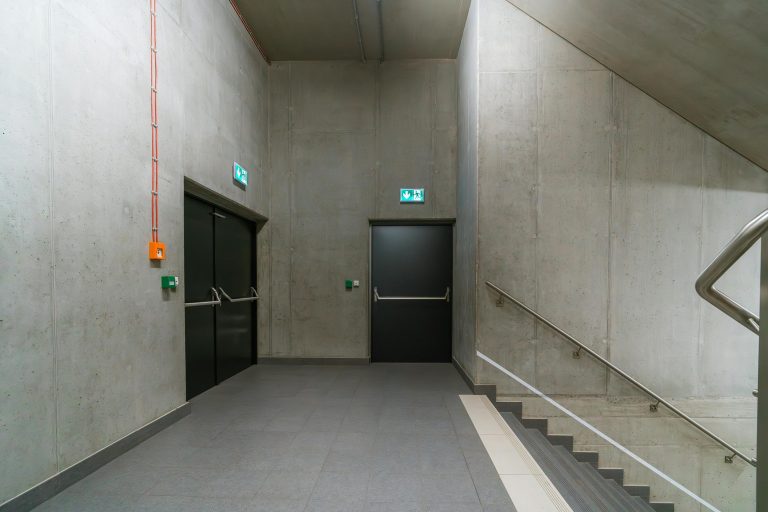Fire spreads fast. When buildings aren’t built to slow it down, the results can be deadly. That’s where fire compartmentation comes in. It’s not flashy. Most people won’t notice it. But when it fails, the damage shows.
This blog looks at how fire compartmentation works, what happens when it doesn’t, and how to spot problems before it’s too late.
What Is Fire Compartmentation?
Fire compartmentation is about stopping fire and smoke from moving freely through a building. Walls, floors and ceilings act as barriers. These create compartments that trap fire in one space for a limited time. That gives people more time to escape. It also helps firefighters take control.
The idea sounds simple. But for it to work, every part has to hold up under pressure. Even a small gap can make the system fail.
How Compartments Control Fire Spread
Compartments rely on fire-resistant materials. Walls should be sealed. Floors need protection. Ceilings must hold back smoke. Every barrier has a rating. This tells how long it can resist fire. Some last 30 minutes. Others hold for an hour or more.
If one part breaks down, the fire can breach the barrier. That’s how a small fire turns into a full-blown disaster.
Key Legal Standards in the UK
UK building laws require fire safety to be built into the design. The main rules come from the Building Regulations 2010. The Fire Safety Order 2005 also applies. Together, they cover what materials to use, how to install them, and how to maintain them.
Any work on a building must follow these rules. If not, the building may not be safe for use.
Why Poor Compartmentation Puts Lives at Risk
When barriers fail, smoke and fire spread quicker. That means more damage, less time to escape, and more risk to life.
One example stands out.
Case Study: Grenfell Tower
Grenfell was a tragedy. The fire spread faster than it should have. One reason was poor fire compartmentation. Gaps in the walls. Faulty fire doors. Cladding that made it worse. The building couldn’t contain the fire.
People died because systems meant to stop fire didn’t work.
How Fire & Smoke Spread Without Barriers
Fire looks for weak spots. Gaps around pipes. Cracks in walls. Open voids above ceilings. Smoke flows through them easily. So does heat. In minutes, a single fire can move across floors.
Once it gets in, it’s hard to stop.
Warning Signs of Poor Compartmentation
Buildings give clues. Some are easy to miss. Others are right in front of you.
Gaps Around Pipes and Cables
Service voids are a big risk. When people run cables or pipes through walls, they leave holes. If not sealed, fire slips through.
Damaged Fire Doors or Frames
Doors slow fire down. If they’re cracked, warped or won’t close fully, they can’t do their job.
Missing or Incorrect Fire-Stopping Materials
Some walls have filler. Others just have foam. If it’s not the right kind, it melts in fire. Fire stopping training teaches workers what to use and how to fit it properly.
Common Failures in Compartmentation
Not every fault is obvious. Some hide behind walls or above ceilings. Others happen during refurb work. Here are the most common ones.
1. Breached Service Voids
Contractors run pipes or wires through walls. If they skip fire sealing, the barrier is gone. Fire gets a free pass.
2. Unsealed Joints and Gaps
Small gaps add up. Around windows. Between walls and floors. A line of exposed plasterboard. All can let fire in.
3. Poor Maintenance of Fire Doors
Doors get slammed. Hinges wear out. Gaps appear under the door. Smoke brushes straight through.
4. Incomplete Installation During Refurbishment
Quick fixes leave behind hidden dangers. Rushed jobs don’t restore compartmentation properly. Panels are left loose. Fire collars are missing.
5. Untrained Staff Making Building Changes
Someone drills into a wall to mount a screen. Another cuts a ceiling panel for lighting. Small changes. Big risk. If they don’t know what they’re doing, they break the barrier.
How to Keep Fire Compartmentation Working
It’s not just about spotting the damage. It’s about building right. Fixing faults. Training people. Making fire safety part of the routine.
Professional Fire Risk Assessments
A full fire risk check finds weak spots. Assessors know where to look. They’ll check voids, ducts and hidden spaces. They look at fire doors. They check the seals. They don’t guess.
Use of Certified Fire-Stopping Products
Cheap foam won’t work. It melts. Spreads smoke. Fire stops need to be tested. Approved. Installed the right way. Every filler, wrap or collar must match the fire rating of the barrier.
Competent Installer Requirement
Fire safety isn’t DIY. You need trained people. That’s where “Fire Stopping Training” comes in. It teaches the right method. Right tools. Right materials. Without that, you’re gambling with lives.
The Role of Staff Awareness in Preventing Failures
It’s not just about the builders. Office staff. Cleaners. Maintenance teams. Everyone plays a role.
Spotting Damage Early
Staff need to flag broken doors. Report visible gaps. Question dodgy fixes. If no one’s looking, small faults get worse.
Getting the Basics Right
Online health and safety training for employees helps. It gives people the basics. What to look for. What to avoid. It’s quick. It’s simple. But it makes a difference.
Legal and Financial Fallout
Break the rules and the cost hits hard. Fines stack up. Insurance may not pay out. Legal action follows. Most of all, someone gets hurt. That’s the worst outcome.
Regulators won’t accept excuses. If the fire barriers are broken, you’re responsible. Whether you’re an owner, manager or contractor. Ignorance isn’t a defence.
Don’t Wait for Smoke
Fires don’t send warnings. They start quietly. A charger sparks. A cable overheats. A fryer tips over.
By the time flames break out, it’s too late to fix a wall or close a door.
Fire compartmentation can’t be an afterthought. It’s built into the bones of a safe building. When done right, it buys time. Saves lives. Limits damage.
But when ignored? The consequences are brutal.
So don’t wait. Check the doors. Seal the gaps. Train the staff. Get it right before the fire starts.


